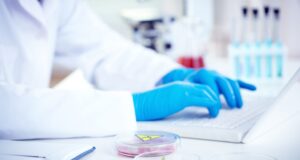Understanding the Drug Development Life Cycle
The drug development life cycle is essential for producing safe and effective medications. Nonetheless, the pharmaceutical sector must collaborate to overcome significant obstacles along the way.
What Is the Drug Development Process?
According to the FDA, there are 5 phases in the medication development process.
The initial phase involves research and development. In this stage, researchers analyze fresh insights into a disease’s pathophysiology which enables them to build an anti-disease product. Then, they evaluate molecular compounds for their potential anti-disease actions.
In addition to using current therapies, researchers often use modern technology to uncover newer drugs. They next perform trials to determine how the medicine is absorbed, distributed, metabolized and eliminated.
In addition, they determine the medication’s possible advantages and methods of action, the optimal dose, the optimal technique to administer the medicine, the bad effects, how it affects various groups of patients, how it interacts with other drugs and therapies, and its comparative efficacy with other drugs.
Preclinical research (which includes in vitro and in vivo tests) is the second phase of the drug development procedure. The FDA notes that throughout preclinical research, medications undergo laboratory and animal testing to address fundamental issues regarding safety. In this stage, the FDA requires researchers to use laboratory best practices outlined in the medical product development regulation to evaluate product safety.
Each research must comply with these standards on its conduct, subjects, premises, equipment, written protocols, operating procedures, study reports and quality assurance oversight system.
The third phase involves clinical research. This refers to investigations or trials conducted on humans.
Through clinical research, specific medical product-related issues are solved. Through these responses, researchers determine who is eligible to participate, how many individuals will be a part of the study, how long the study will last, a control group, how the drug will be administered, what assessments will be conducted, and how the data will be analyzed according to the FDA.
The FDA medication review represents the fourth phase. Upon the submission of a New Drug Application by a pharmaceutical company, the FDA analyzes the drug and either approves or rejects it. Ultimately, an FDA advisory group offers their advice.
The last phase of medication development is FDA post-market drug safety monitoring. This is where the FDA evaluates complaints of adverse medication reactions and decides whether or not to add warnings to dose or use instructions, as well as additional steps for more significant concerns.
Best Methods for the Drug Development Process
 In December 2017, the FDA issued guidelines about the best practices for communication between sponsors of investigational new drug applications and the FDA. These sponsors and the FDA collaborate to create safe, effective, and high-quality pharmaceuticals for the American public throughout the drug development process.
In December 2017, the FDA issued guidelines about the best practices for communication between sponsors of investigational new drug applications and the FDA. These sponsors and the FDA collaborate to create safe, effective, and high-quality pharmaceuticals for the American public throughout the drug development process.
To boost the efficacy of the medication development process, the FDA has pushed for a quick assessment of experimental new drug filings and pertinent input. This covers the sufficiency of technical data, the design of a clinical study, and the likelihood that the suggested research will yield the required data and information.
The FDA said that scientific and regulatory advice made during drug development discussions with sponsors might lead to more robust development programs. The director of the NCATS (National Center for the Advancing of Translational Science) outlined particular methods for improving target identification. He said that more effective therapies might be devised if the processes of neurological systems (and particular brain pathways involved in illness genesis) were better understood.
Consequently, researchers might create additional assays using developing techniques and technologies, which could lead to developing more targeted medicines. Vital to the development program is also cost reduction and pressure on prices.
The 5 best strategies for reducing operating expenses and enhancing cycle time in research and development:
- Outsourcing research and development process
- Using business process management to make things work better
- Using lean process improvement to get rid of activities which don’t add value
- Using big data to find important drugs the industry needs
- Using strategic industry partnerships and cross-company standardization to help streamline and improve operations
Overall, the drug development cycle is intricate and crucial. The purpose of the whole process is to establish whether a medicine is safe and effective for treating certain illnesses. However, biotechnology and pharmaceutical businesses must collaborate to examine the reasons and patterns behind these diverse difficulties, so as to address them and promote good treatments in the supply chain.
To find out more about the process, visit Rondaxe online or call us in New York at (315) 469-2800 today.

